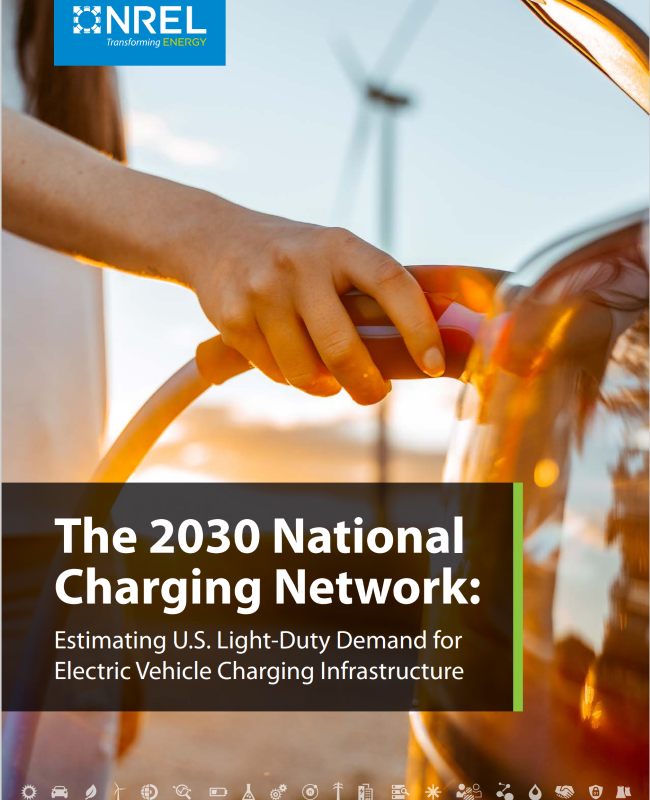As established by the Infrastructure Investment and Jobs Act, also known as the Bipartisan Infrastructure Law, the Joint Office of Energy and Transportation (Joint Office) is setting the vision for a national charging network that is convenient, affordable, reliable, and equitable to enable a future where everyone can ride and drive electric. This report supports the vision of the Joint Office by presenting a quantitative needs assessment for a national charging network capable of supporting 30–42 million PEVs on the road by 2030. Estimating infrastructure needs at the national level is a challenging analytic problem that requires quantifying the needs of future PEV drivers in various use cases, under region-specific environmental conditions, and with consideration for the built environment. This analysis
leverages the National Renewable Energy Laboratory’s suite of electric vehicle infrastructure analysis tools (EVI-X) and the best available real-world data describing PEV adoption patterns, vehicle technology, residential access, travel profiles, and charging behavior to estimate future charging needs. Multiple PEV charging use cases are considered, including typical needs to accommodate daily driving for those with and without residential access, corridor-basedcharging4 supporting long-distance road trips, and ride-hailing electrification. While the analysis is national in scope, the simulation framework enables inspection of results by state and city, with parametric sensitivity analysis used to test a range of assumptions.
Preview the report here:
More About this Resource
Publisher: Joint Office of Energy and Transportation
Date: June 1, 2023
Type: Research Reports
Countries: United States
States: None

